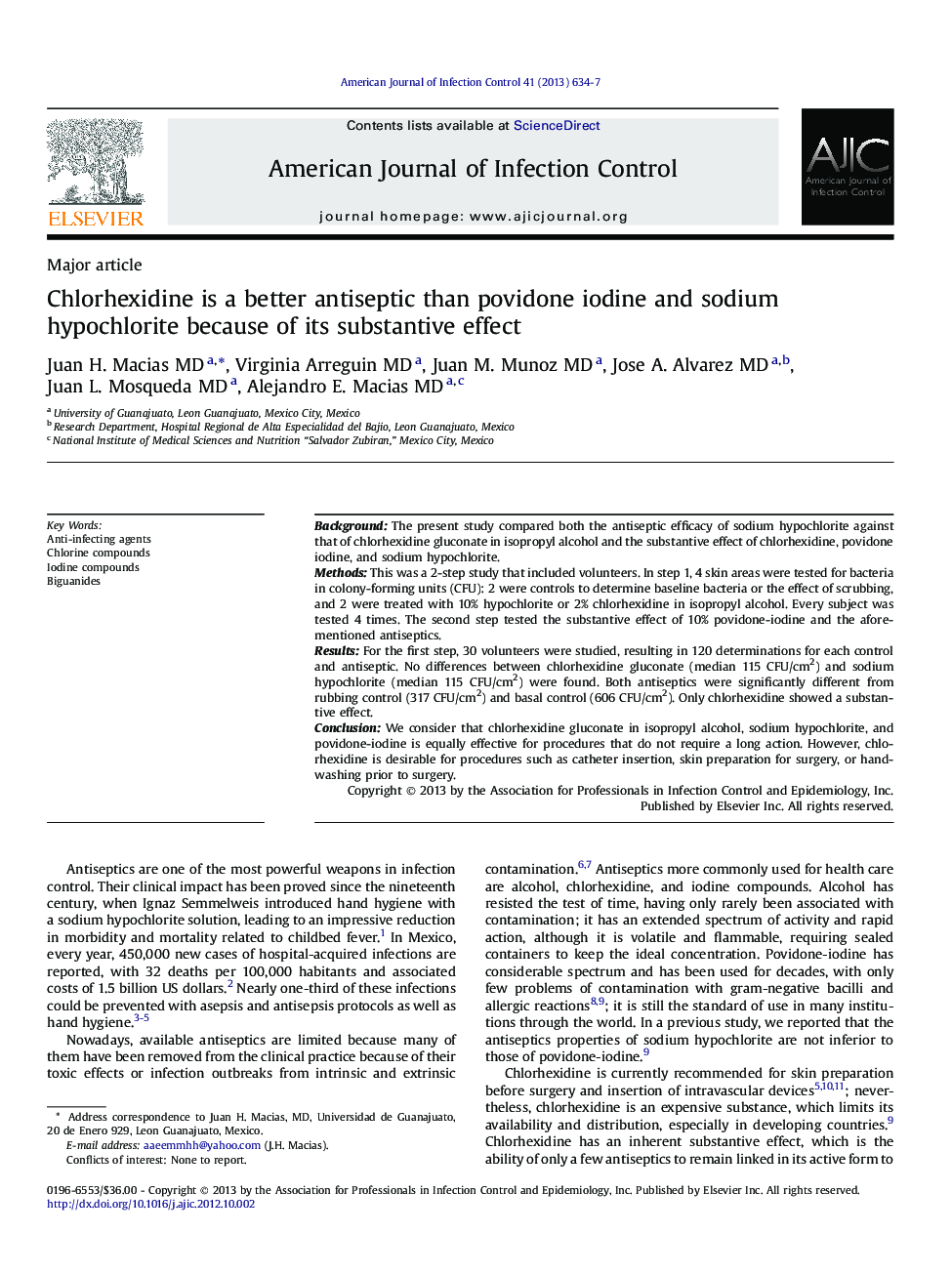| Article ID | Journal | Published Year | Pages | File Type |
|---|---|---|---|---|
| 2639737 | American Journal of Infection Control | 2013 | 4 Pages |
BackgroundThe present study compared both the antiseptic efficacy of sodium hypochlorite against that of chlorhexidine gluconate in isopropyl alcohol and the substantive effect of chlorhexidine, povidone iodine, and sodium hypochlorite.MethodsThis was a 2-step study that included volunteers. In step 1, 4 skin areas were tested for bacteria in colony-forming units (CFU): 2 were controls to determine baseline bacteria or the effect of scrubbing, and 2 were treated with 10% hypochlorite or 2% chlorhexidine in isopropyl alcohol. Every subject was tested 4 times. The second step tested the substantive effect of 10% povidone-iodine and the aforementioned antiseptics.ResultsFor the first step, 30 volunteers were studied, resulting in 120 determinations for each control and antiseptic. No differences between chlorhexidine gluconate (median 115 CFU/cm2) and sodium hypochlorite (median 115 CFU/cm2) were found. Both antiseptics were significantly different from rubbing control (317 CFU/cm2) and basal control (606 CFU/cm2). Only chlorhexidine showed a substantive effect.ConclusionWe consider that chlorhexidine gluconate in isopropyl alcohol, sodium hypochlorite, and povidone-iodine is equally effective for procedures that do not require a long action. However, chlorhexidine is desirable for procedures such as catheter insertion, skin preparation for surgery, or handwashing prior to surgery.
